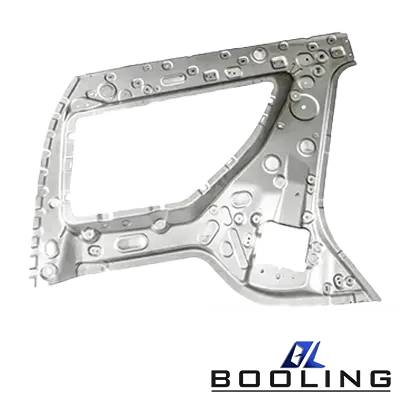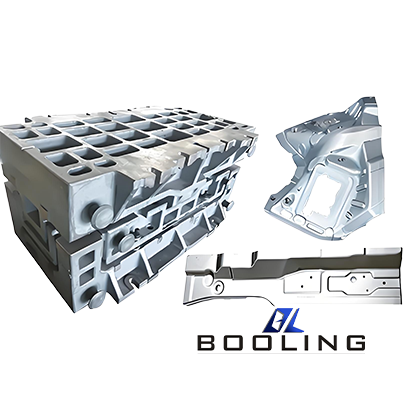Home > Magnesium Stamping Die | Carbide Stamping Die
The amount of material waste generated during the production and manufacturing process of the magnesium stamping die is relatively small. In addition, the high manufacturing efficiency, fast design cycle, and high precision of magnesium stamping process have contributed to the progress of modern stamping technology.
Advantages of Magnesium Stamping Die:
- Low cost
- High automation
- High accuracy
- Cost-Effectiveness
- High efficiency
- Tight tolerances
Magnesium Stamping dies play a pivotal role in shaping and transforming raw materials into intricate and functional components. These specialized tools are employed across a wide range of industries, from automotive and aerospace to electronics and consumer goods. The magnesium stamping die process encompasses various techniques, each with its unique set of carbide stamping die designed to achieve specific objectives.
Magnesium Blanking Dies
Magnesium Blanking dies are the starting point for many stamping operations. These dies are used to cut or trim flat metal sheets into specific shapes, known as blanks, which serve as the foundation for further forming processes.
- The Blanking Process
The blanking process involves placing a metal sheet between the punch and die components of the blanking die. As the punch descends, it shears through the metal sheet, creating the desired blank shape. The stripper plate, located above the die, helps separate the blank from the punch after the cutting operation.
- Applications of Blanking Dies
Blanking dies are widely used in various industries for producing blanks that serve as the initial workpiece for subsequent forming operations. These dies are essential in the manufacturing of components such as:
– Automotive: Blanks for body panels, structural components, and trim pieces.
– Aerospace: Blanks for aircraft components and assemblies.
– Electronics: Blanks for enclosures, housings, and brackets.
– Consumer Goods: Blanks for appliance components and decorative elements.
- Blanking Die Components
The primary components of a blanking die include:
- Die Block: The die block houses the die cavity or impression, which defines the shape of the blank.
- Punch: The punch is the component that applies pressure to the workpiece, shearing through the metal sheet to create the desired blank shape.
- Stripper Plate: The stripper plate separates the blank from the punch after the cutting operation, ensuring smooth ejection.
- Blanking Process Steps
- The blanking process typically follows these steps:
- A metal sheet is positioned between the punch and die components.
- As the punch descends, it shears through the metal sheet, creating the desired blank shape.
- The stripper plate helps separate the blank from the punch after the cutting operation.
- The blank is ejected from the die, ready for further forming processes.
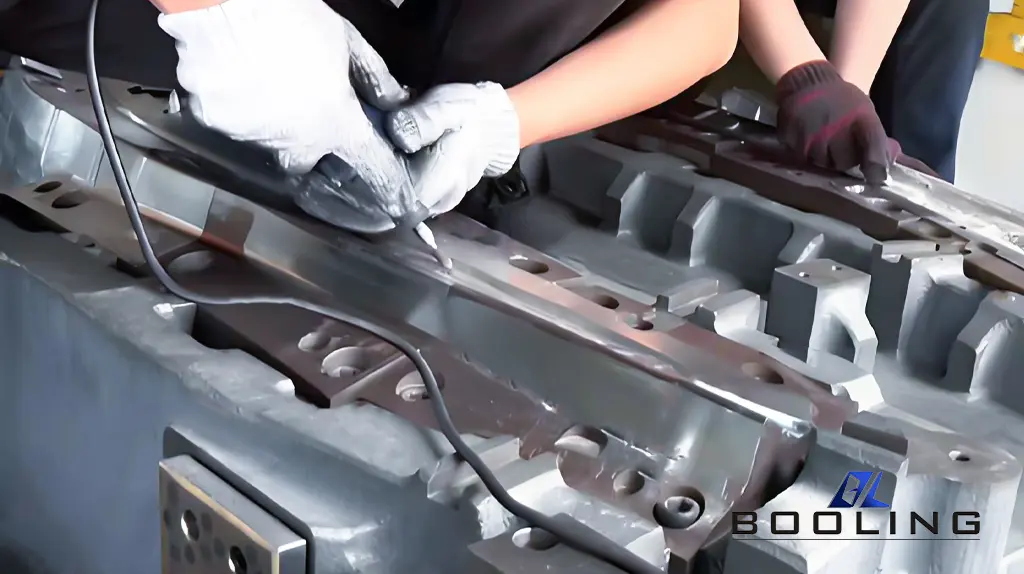
Magnesium Bending Dies
Bending dies are designed to deform magnesium metal sheets along a straight line or curve, creating a desired angle or shape. These dies are commonly used for forming components with bent or curved features.
- The Bending Process
In the bending process, a metal sheet or blank is positioned between the punch and die components. As the punch descends, it forces the metal to bend and conform to the shape of the die cavity. The degree of bending is controlled by the depth of the punch stroke and the geometry of the die cavity.
- Applications of Bending Dies
Bending dies are widely used in various industries for producing components with bent or curved features, such as:
– Automotive: Body panels, structural components, and trim pieces.
– Construction: Structural components, architectural elements, and furniture frames.
– Appliance Manufacturing: Housings, enclosures, and decorative elements.
- Bending Die Components
The primary components of a bending die include:
- Die Block: The die block houses the die cavity, which defines the desired bend or curve.
- Punch: The punch applies pressure to the workpiece, forcing it to conform to the shape of the die cavity.
- Stripper Plate: The stripper plate ensures smooth ejection of the bent component from the die.
- Bending Process Steps
- The bending process typically follows these steps:
1.A metal sheet or blank is positioned between the punch and die components.
2.As the punch descends, it forces the metal to bend and conform to the shape of the die cavity.
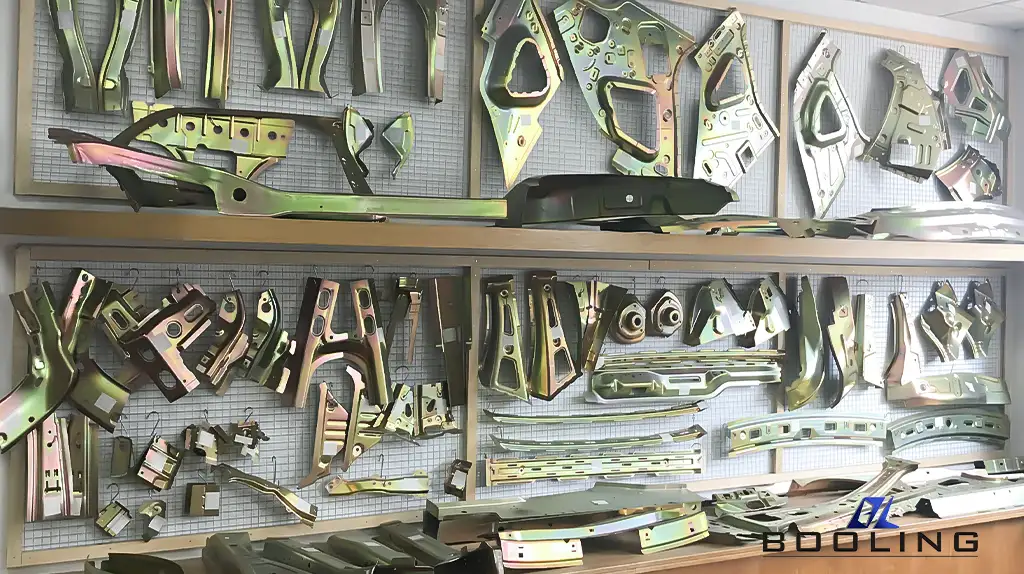
Drawing Magnesium Stamping Dies
Drawing dies are used in the forming process known as drawing, where a flat blank is transformed into a cup-shaped or cylindrical part by stretching and deforming the metal over a punch or die cavity.
- The Drawing Process
In the drawing magnesium stamping dies process, a flat blank is positioned over the die cavity, and a punch descends, forcing the metal into the cavity. As the punch continues to descend, the metal is stretched and deformed, taking on the shape of the die cavity. This process can be repeated multiple times, with each subsequent draw further shaping the part.
- Applications of Drawing Dies
Drawing dies are essential in the production of various components with cup-shaped or cylindrical geometries, such as:
– Automotive: Fuel tanks, oil pans, and structural components.
– Beverage Industry: Cans and containers.
– Aerospace: Fuselage sections and structural components.
– Consumer Goods: Cookware, kitchen utensils, and decorative elements.
3.Drawing Die Components
The primary components of a drawing die include:
Die Block: The die block houses the die cavity, which defines the desired shape of the drawn part.
Punch: The punch applies pressure to the blank, forcing it into the die cavity and stretching the metal.
Blank Holder: The blank holder applies pressure to the blank, controlling the material flow during the drawing process.
4.Drawing Process Steps
The drawing process typically follows these steps:
l A flat blank is positioned over the die cavity, and the blank holder applies pressure to secure the blank.
l As the punch descends, it forces the metal into the die cavity, stretching and deforming the blank.
l The punch continues to descend, further shaping the part to the desired geometry.
l The drawn part is ejected from the die, and ready for further processing or assembly.
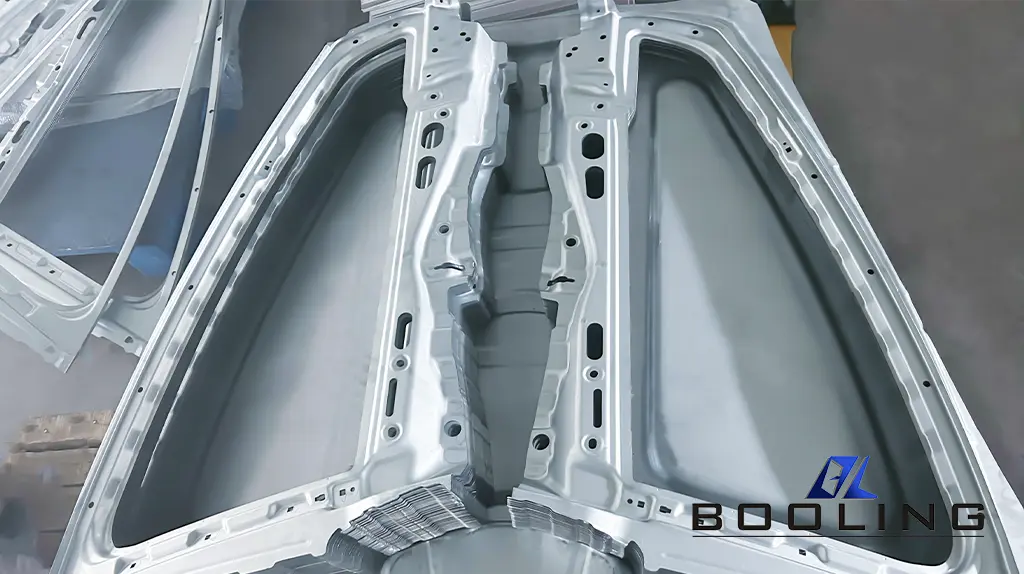
Forming Dies
Forming dies are used to shape metal sheets or blanks into complex, three-dimensional geometries. These dies are often employed in processes such as stamping, embossing, and coining, where intricate details and features are imparted onto the workpiece.
- The Magnesium Forming Process
The forming process involves positioning a metal sheet or blank between the punch and die components. As the punch descends, it forces the metal to conform to the shape of the die cavity, creating the desired three-dimensional form. Depending on the complexity of the part, multiple forming operations may be required, each using a different set of dies.
- Applications of Forming Dies
Forming dies are widely used in various industries for producing components with complex geometries, such as:
– Automotive: Body panels, structural components, and trim pieces.
– Aerospace: Wing skins, fuselage sections, and structural components.
– Appliance Manufacturing: Housings, enclosures, and decorative elements.
– Construction: Architectural elements and decorative features.
- Forming Die Components
The primary components of a forming die include:
-Die Block: The die block houses the die cavity, which defines the desired three-dimensional shape of the formed part.
-Punch: The punch applies pressure to the workpiece, forcing it to conform to the shape of the die cavity.
-Stripper Plate: The stripper plate ensures smooth ejection of the formed part from the die.
- Forming Process Steps
The forming process typically follows these steps:
-A metal sheet or blank is positioned between the punch and die components.
-As the punch descends, it forces the metal to conform to the shape of the die cavity, creating the desired three-dimensional form.
-Depending on the complexity of the part, multiple forming operations may be required, each using a different set of dies.
-The formed part is ejected from the die, and ready for further processing or assembly.
Magnesium Joining Dies
Joining dies are used in the process of joining or assembling multiple components, typically through mechanical deformation or crimping. These dies are essential in the production of assemblies and sub-assemblies where multiple parts need to be securely joined.
- The Joining Process
The joining process involves positioning the components to be joined within the die cavity. As the punch descends, it applies pressure or deformation to the components, creating a secure mechanical joint or crimp. Depending on the application, various joining techniques may be employed, such as clinching, riveting, or staking.
- Applications of Joining Dies
Joining dies are widely used in various industries for assembling and joining components, such as:
– Automotive: Body assemblies, trim components, and electrical assemblies.
– Electronics: Connectors, switches, and housing assemblies.
– Appliance Manufacturing: Control panels, housing components, and hardware assemblies.
– Furniture and Hardware: Frames, hardware components, and decorative elements.
3.Joining Die Components
The primary components of a joining die include:
–Die Block: The die block houses the die cavity, which defines the desired joint or crimp geometry.
–Punch: The punch applies pressure or deformation to the components, creating the mechanical joint or crimp.
–Stripper Plate: The stripper plate ensures smooth ejection of the joined assembly from the die.
4.Joining Process Steps
The joining process typically follows these steps:
- The components to be joined are positioned within the die cavity.
- As the punch descends, it applies pressure or deformation to the components, creating a secure mechanical joint or crimp.
- Depending on the application, various joining techniques may be employed, such as clinching, riveting, or staking.
- The joined assembly is ejected from the die, ready for further processing or assembly.
In the world of metal magnesium forming, stamping die operations play a crucial role in shaping and transforming raw materials into intricate and functional components. These specialized processes involve the use of precision-engineered tools and techniques to deform and shape metal sheets into desired geometries. From automotive body panels to aerospace components, the products of magnesium stamping die operations are ubiquitous in our daily lives.
Stamping Dies Related Content
Applied’s expertise in modifying materials at atomic levels and on an ihdustrial scaleenables our customers to transform possibilities into reality.

